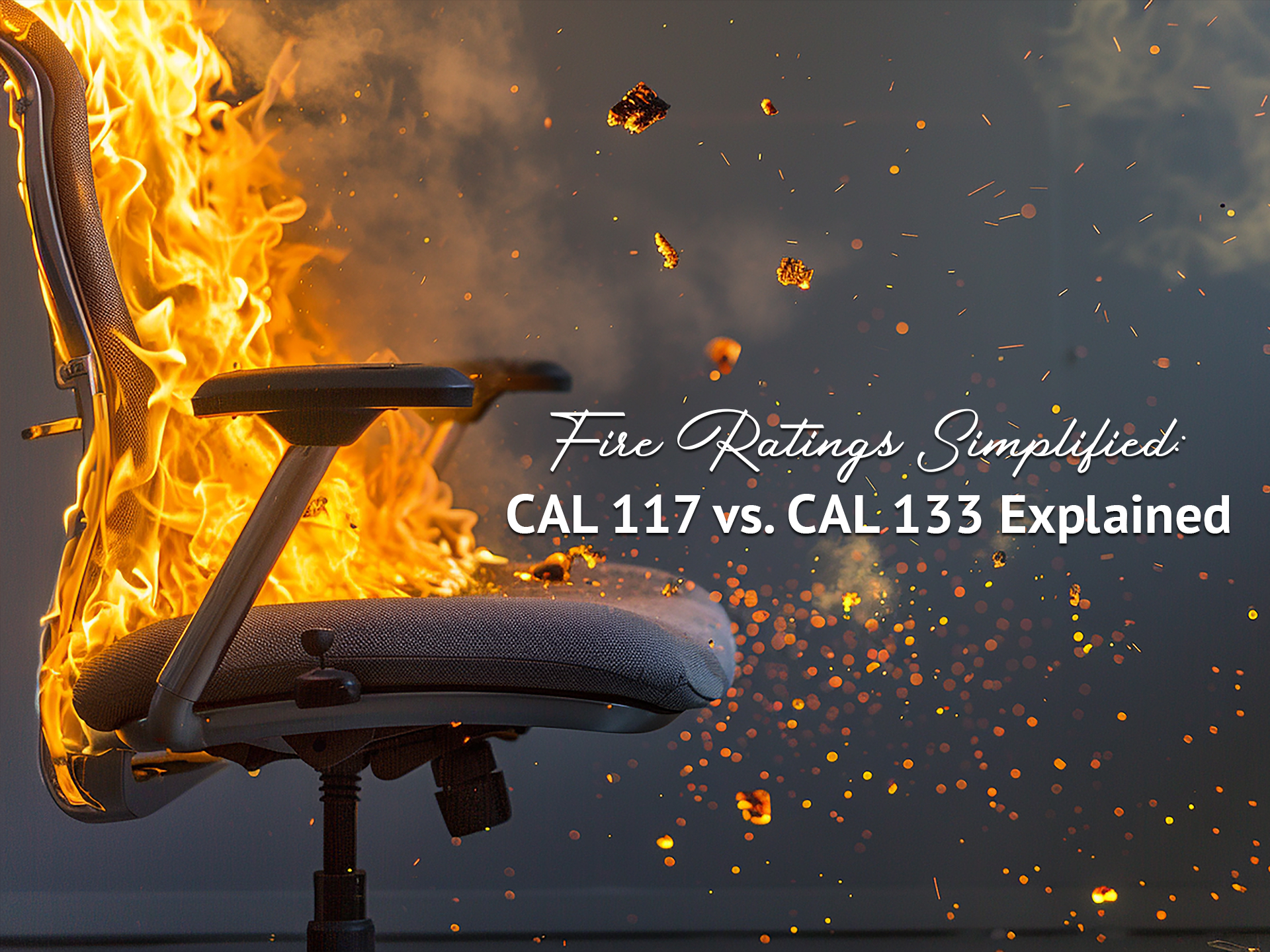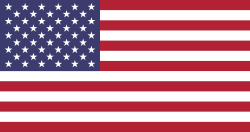Invoering
Bij het selecteren van materialen en externe afwerkingen voor uw aanstaande commerciële of industriële bouwproject, is het van het grootste belang dat u voldoet aan de minimale brandwerendheidsnormen. Deze naleving is van cruciaal belang voor het handhaven van de overkoepelende veiligheid van elk gebouw. Het naleven van deze normen is meer dan een wettelijke vereiste; het is een morele en ethische verantwoordelijkheid die rechtstreeks van invloed is op het leven en de veiligheid van de bewoners van het gebouw. Dit onderstreept met name het belang van strenge kwaliteitsinspecties, vooral bij het overwegen van aankopen bij nieuwe of onbekende fabrikanten.
Waarom brandwerendheid belangrijk is bij het inkopen van meubilair
Brandclassificaties zijn niet alleen technische normen; ze zijn cruciale hulpmiddelen voor risicomanagement en -beperking in elk bouwproject. In de context van het aanschaffen van meubilair voor uw project verdienen twee cruciale factoren aandacht: de brandwerendheid van de materialen en hun brandbeheersingsvermogen. De wisselwerking tussen deze elementen heeft een aanzienlijke impact op de veiligheid van materialen in het geval van brandincidenten en hun vermogen om branduitbraken snel te onderdrukken.
Onvoldoende brandwerendheid in meubelmaterialen kan leiden tot snelle verspreiding van brand, waardoor gevaarlijke omstandigheden ontstaan en de kans op verlies van mensenlevens en eigendommen toeneemt. Daarom is het cruciaal om brandclassificaties te begrijpen en hoe deze van toepassing zijn op verschillende materialen. Wereldwijd bestaan er verschillende brandclassificatienormen die betrekking hebben op diverse elementen zoals sprinklersystemen, isolatie, bouwmaterialen en meubilair. In wezen krijgt elk materiaal met het potentieel om te ontbranden of bij te dragen aan een brandgebeurtenis een specifieke classificatie die de capaciteit ervan weergeeft om een brandincident te weerstaan of te beperken.
Het begrijpen van deze brandclassificatienormen is cruciaal bij het bepalen van uw materiaalkeuzes voor uw aankomende bouwprojecten, met name in gebieden die onderhevig zijn aan strenge brandveiligheidscodes. Deze normen worden nog belangrijker bij het sourcen van meubels uit landen als China, waar verschillende regelgevingen en kwaliteitsnormen van toepassing kunnen zijn. Twee van de meest kritische normen in dit opzicht zijn CAL 117 en CAL 133. In dit artikel duiken we in deze normen, hun verschillen en waarom ze van belang zijn voor uw inkoopbeslissingen.
Wat is CAL 117? De basis begrijpen
CAL 117, of California Technical Bulletin 117, vertegenwoordigt een industriebrede norm die voornamelijk van toepassing is op gestoffeerde meubelstukken in de Verenigde Staten en Canada. Gezien de prevalentie van brandbare materialen zoals hout, schuim en stof in verschillende omgevingen, is het van het grootste belang om brandbeveiliging voor meubels te garanderen. CAL 117 is ontworpen om de prestaties van brandvertragende behandelingen te evalueren, zoals verf, coatings en andere brandwerende materialen, die op meubels worden aangebracht om het risico op ontsteking te minimaliseren en de verspreiding van vlammen te vertragen in geval van brandincidenten.
De CAL 117 brandclassificatienorm omvat een evaluatieproces in twee fasen om de brandwerendheid en de insluitingseigenschappen van een materiaal te bepalen. De eerste fase richt zich op het vermogen van het materiaal om brand te weerstaan, gelabeld als de Fire Resistance Rating (FR). Deze classificatie is als volgt gecategoriseerd:
- FR-0: Het materiaal biedt geen bescherming tegen brand. Het is zeer brandbaar en bevat geen brandvertragende eigenschappen.
- FR-1: Het materiaal kan een kleine brand blussen en het meubilair beschermen tegen matige hitte. Dit niveau is geschikt voor materialen die behandeld zijn om ontsteking te weerstaan, maar niet erg duurzaam zijn onder intense omstandigheden.
- FR-2: Het materiaal kan gedurende een korte periode matige hitte weerstaan. Dit is geschikt voor materialen die een matige mate van brandwerendheid bieden, die doorgaans worden aangetroffen in woonomgevingen of omgevingen met een lager risico.
- FR-3: Het materiaal kan extreme hitte gedurende een korte periode weerstaan. Deze materialen bieden een hoger beschermingsniveau en worden vaak gebruikt in openbare ruimtes of commerciële omgevingen waar het brandrisico hoger kan zijn.
- FR-4 of hoger: Producten met dit niveau worden geacht brand gedurende een langere periode te kunnen weerstaan. Dergelijke materialen zijn cruciaal in gebieden waar een aanzienlijk brandrisico bestaat of waar vluchttijden gemaximaliseerd moeten worden.
De tweede fase, de zogenaamde Fire Containment Rating (CR), beoordeelt hoe snel het materiaal de voortgang van een brand kan stoppen:
- CR-0: Het materiaal is niet in staat een brand te beheersen, waardoor deze zich snel kan verspreiden.
- CR-1: Het duurt 30 minuten of langer om een brand te blussen. Deze beoordeling geeft een lager niveau van inperking aan.
- CR-2: Het duurt 15 minuten of langer om een brand te blussen. Dit niveau biedt matige containmentmogelijkheden.
- CR-3: Het product kan een brand binnen 10 minuten blussen. Deze beoordeling vertegenwoordigt het hoogste niveau van containment efficiency.
Begrijpen van CAL 133: een strengere norm
Ter vergelijking, CAL 133 is een brandwerende norm die is vastgesteld door Underwriters Laboratories (UL) en is voornamelijk gericht op gestoffeerd meubilair dat bedoeld is voor gebruik in commerciële omgevingen. Hoewel CAL 133 enige overeenkomsten vertoont met CAL 117 wat betreft brandveiligheid, hanteert het een strengere aanpak, met name voor het reguleren van meubelmaterialen die in openbare ruimtes worden gebruikt. Deze ruimtes omvatten overheidsgebouwen en kantoren van particuliere bedrijven die ten minste tien werknemers huisvesten. Bijgevolg onderscheidt CAL 133 zich als een van de strengste brandwerende normen voor meubilair.
De CAL 133-classificatie bestaat ook uit twee fasen die het vermogen van het materiaal om vuur te weerstaan en in te dammen evalueren. De categorieën van de Fire Resistance Rating (FR) zijn vergelijkbaar met die van CAL 117:
- FR-0: Het materiaal biedt geen bescherming tegen brand. Het is zeer brandbaar en bevat geen brandvertragende eigenschappen.
- FR-1: Het meubelmateriaal kan een kleine brand blussen. Dit is een basisniveau van brandwerendheid.
- FR-2: Het materiaal kan matige hitte weerstaan en zichzelf beschermen tegen dergelijke hitte. Dit niveau biedt matige bescherming, geschikt voor minder risicovolle omgevingen.
- FR-3: Het materiaal kan extreme hitte gedurende een beperkte periode verdragen. Deze classificatie is cruciaal voor commerciële omgevingen waar het risico op brand verhoogd kan zijn.
CAL 133 gaat echter verder dan CAL 117 door een volledige itemtest te implementeren, waarbij niet alleen de gebruikte materialen worden beoordeeld, maar ook de gehele meubelstructuur. Deze methode maakt CAL 133 strenger, uitgebreider en uiteindelijk betrouwbaarder voor omgevingen met een hoog risico.
Onderscheid tussen CAL 117 en CAL 133
In essentie dient CAL 117 als de fundamentele norm voor het beoordelen van de ontvlambaarheid van gestoffeerd meubilair in de Verenigde Staten en Canada. Integendeel, CAL 133 dient als een uitgebreid beoordelingssysteem dat is afgestemd op gestoffeerd meubilair dat bedoeld is voor gebruik in commerciële omgevingen.
Bovendien breidt CAL 133 zijn bereik uit naar gestoffeerd meubilair in openbare ruimten met een hoog risico, waaronder instellingen als ziekenhuizen, kinderdagverblijven, verpleeghuizen, penitentiaire inrichtingen, openbare stadions, auditoria en vergaderruimten. Deze brede toepassing maakt CAL 133 een van de strengste brandwerende normen in de meubelindustrie.
Terwijl CAL 117 zich primair richt op de vulmaterialen en stoffen die in meubels worden gebruikt, voert CAL 133 een volledige itemtest uit, waarbij de brandwerendheid van de gehele meubelstructuur wordt beoordeeld. Deze uitgebreidere testmethode is een van de redenen waarom CAL 133 als een strengere brandclassificatie wordt beschouwd dan CAL 117.

Testuitdagingen
Het is essentieel om te erkennen dat CAL 133 een aanzienlijke uitdaging vormt voor meubelfabrikanten. Tijdens het testen wordt een meubelstuk, zoals een stoel, bank, kruk, voetenbank of bank, 80 seconden lang aan ontsteking blootgesteld met behulp van een gasbrander. Dit rigoureuze testproces houdt rekening met verschillende factoren, waaronder temperatuur, koolmonoxide-uitstoot, warmteontwikkeling, rookproductie en gewichtsverlies. De metingen van deze factoren worden nauwkeurig vergeleken met testcriteria die door de regelgevende instantie zijn vastgesteld om de conformiteits- of niet-conformiteitsclassificatie voor het meubelstuk te bepalen.
De veeleisende aard van deze test, in combinatie met de bijbehorende kosten, maakt het een aanzienlijke financiële last voor meubelfabrikanten. Het voorbereiden van het testartikel, het verzenden ervan naar het testlaboratorium en het dekken van testkosten die kunnen oplopen tot $ 500 tot $ 600 dragen bij aan de uitdagingen en kosten waarmee fabrikanten worden geconfronteerd bij het voldoen aan de CAL 133-normen.
Belangrijkste conclusie
Hoewel u misschien niet bekend bent met de complexiteit van CAL 117 en CAL 133 brandclassificaties, is het cruciaal om hun cruciale rol als regelgevingsprotocollen voor meubilair te herkennen. Deze normen spelen een cruciale rol bij het beschermen van consumenten door ervoor te zorgen dat meubelstukken voldoen aan strenge brandveiligheidseisen.
Ondanks de financiële uitdagingen waarmee fabrikanten en projectmanagers worden geconfronteerd bij het voldoen aan deze normen, is het essentieel om te erkennen dat deze inspanningen het risico op brandverspreiding binnen commerciële en industriële gebouwen aanzienlijk verminderen. De brandwerendheid van meubilair, zoals beoordeeld door deze normen, is van cruciaal belang bij het indammen van branden en, nog belangrijker, het redden van levens tijdens noodsituaties met brand. Daarom is het de plicht van personen die op zoek zijn naar commerciële of residentiële meubelstukken om waakzaam te zijn en prioriteit te geven aan het controleren van de brandwerendheid van materialen voordat ze hun aankoopbeslissingen nemen.
Conclusie
Concluderend is het begrijpen van de verschillen tussen CAL 117 en CAL 133 brandclassificaties essentieel voor iedereen die betrokken is bij de inkoop of het ontwerp van gestoffeerd meubilair. Deze normen zorgen niet alleen voor naleving van brandveiligheidsvoorschriften, maar spelen ook een cruciale rol bij het beschermen van levens en eigendommen.
Naarmate de meubelindustrie zich blijft ontwikkelen, is het van vitaal belang om op de hoogte te blijven van brandveiligheidsnormen en technologische ontwikkelingen. Door brandveiligheid te prioriteren in meubelontwerp en -productie, kunnen belanghebbenden bijdragen aan een veiligere omgeving voor iedereen.
Of u nu ontwerper, fabrikant of consument bent, bewust zijn van brandclassificaties en de implicaties daarvan kan leiden tot meer verantwoorde keuzes die veiligheid vooropstellen zonder afbreuk te doen aan stijl. In een wereld waarin brandveiligheid van het grootste belang is, is het begrijpen en naleven van de CAL 117- en CAL 133-normen niet alleen een wettelijke vereiste; het is een toewijding aan het beschermen van levens en het waarborgen van de veiligheid van onze omgevingen.





